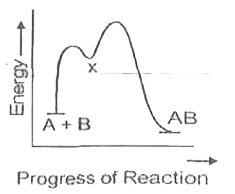_____________ the chemical change that occurs at this electrode is called _____________.
anode, oxidation
anode, reduction
cathode, oxidation
cathode, reduction
The correct Answer is:A,D
Step-by-Step Solution:
1. Identify the Electrodes: In electrolysis, there are two electrodes: the anode and the cathode. The anode is connected to the positive terminal of the battery, while the cathode is connected to the negative terminal.
2. Understand the Processes at Each Electrode:
- At the anode, oxidation occurs. This means that a substance loses electrons.
- At the cathode, reduction occurs. This means that a substance gains electrons.
3. Apply the Concepts to a Specific Example:
- Consider the electrolysis of molten sodium chloride (NaCl). When NaCl is electrolyzed, it dissociates into Na⁺ and Cl⁻ ions.
- The Na⁺ ions migrate towards the cathode (negative electrode), while the Cl⁻ ions migrate towards the anode (positive electrode).
4. Determine the Reactions at Each Electrode:
- At the anode, Cl⁻ ions undergo oxidation. They lose electrons to form Cl₂ gas.
- At the cathode, Na⁺ ions undergo reduction. They gain electrons to form sodium metal.
5. Conclude the Chemical Changes:
- The chemical change that occurs at the anode is called oxidation.
- The chemical change that occurs at the cathode is called reduction.
Final Answer: The chemical change that occurs at this electrode is called oxidation (at the anode) and reduction (at the cathode).
---
- At the anode, oxidation occurs. This means that a substance loses electrons.
- At the cathode, reduction occurs. This means that a substance gains electrons.
- Consider the electrolysis of molten sodium chloride (NaCl). When NaCl is electrolyzed, it dissociates into Na⁺ and Cl⁻ ions.
- The Na⁺ ions migrate towards the cathode (negative electrode), while the Cl⁻ ions migrate towards the anode (positive electrode).
- At the anode, Cl⁻ ions undergo oxidation. They lose electrons to form Cl₂ gas.
- At the cathode, Na⁺ ions undergo reduction. They gain electrons to form sodium metal.
- The chemical change that occurs at the anode is called oxidation.
- The chemical change that occurs at the cathode is called reduction.
Topper's Solved these Questions
- ELECTROLYSISBook:ICSEChapter:ELECTROLYSISExercise:Reason Based Questions
Explore 6 Videos
- ELECTROLYSISBook:ICSEChapter:ELECTROLYSISExercise:Figure Based Questions
Explore 8 Videos
- ELECTROLYSISBook:ICSEChapter:ELECTROLYSISExercise:Fill in the Blanks
Explore 22 Videos
- CHEMISTRY-2015Book:ICSEChapter:CHEMISTRY-2015Exercise:SECTION-II (40 Marks) Attempt any four questions from this Section.
Explore 49 Videos
- METALLURGYBook:ICSEChapter:METALLURGYExercise:UNIT TEST PAPER 6 - Metallurgy (Select the correct answer from the list A,B,C & given in each statement.)
Explore 5 Videos
Similar Questions
Knowledge Check
All the chemical energy transformations that occur within a cell is called :
AmetabolismBadaptationChomeostasisDphotosynthesisThe use of chemicals for treatment of diseases is called as :
AhomeotherapyBchemotherapyCisothermotherapyDphysiotherapy
Chemical change occurs as a result of _____________ between two substances.
View SolutionA chemical reaction cannot occur at all if its
View SolutionElements that do not react chemically are called _____
View SolutionWhich of the following chemical changes can occur with the greatest ease?
View SolutionA chemical process occurring in two steps , is plotted as

View SolutionThe centriole pair occurs in a complex called
View Solution
